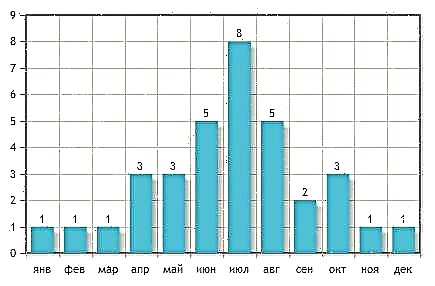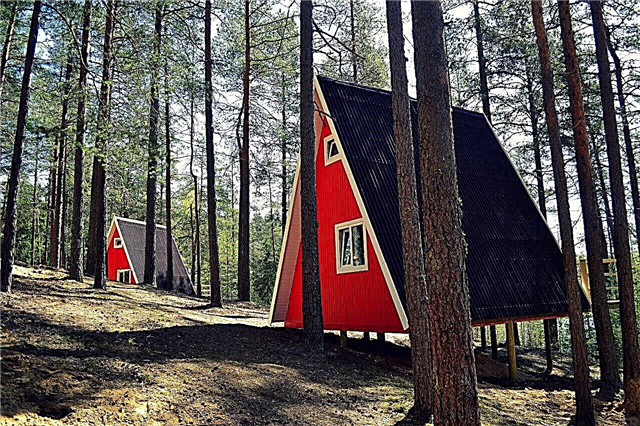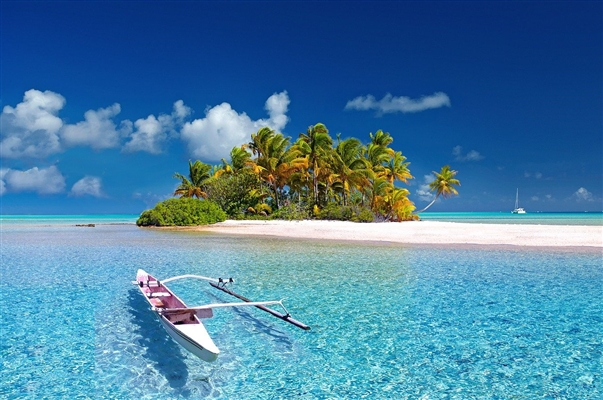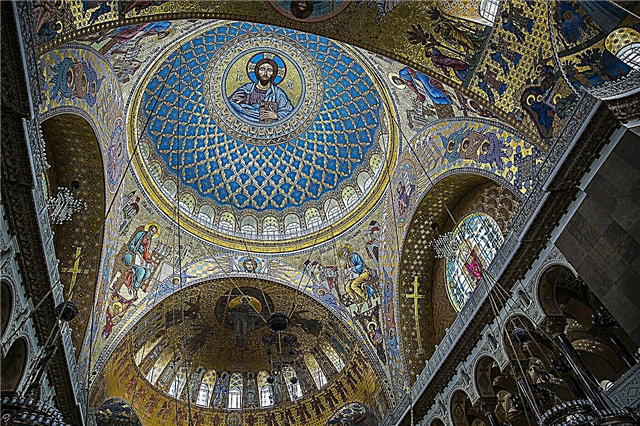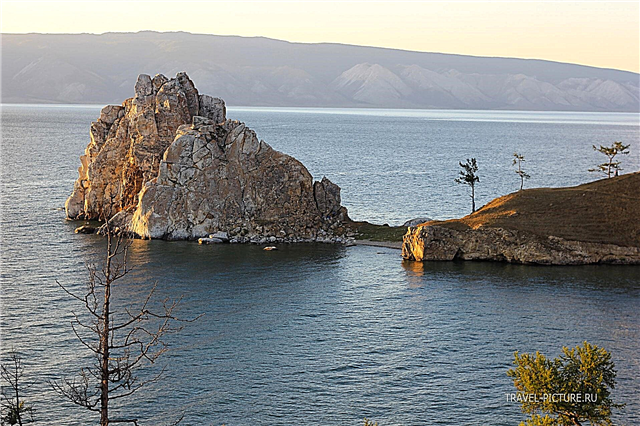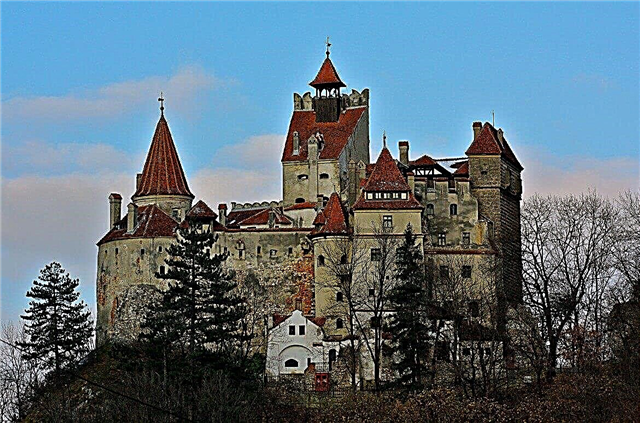Although Romania was considered the outskirts of Europe, it tried to keep up with the center. This is especially clearly expressed in the castle architecture: both ancient, purely defensive buildings and luxurious estates have absorbed the best from European fortification and traditional decor. Dozens of castles are scattered over a relatively small territory of the country, the overwhelming majority in picturesque areas, among forests and mountains.
Nowadays, the monasteries of the Romanian rulers and nobility have been turned into museums filled with collections of all kinds of antiquities with works of art. For a long time, Romania was considered a refuge of all kinds of evil spirits, the legends about werewolves with vampires hail from here. Therefore, almost every castle is sure to find a couple of creepy legends.
Medieval castles and fortresses of Romania
List, photo with titles and a short description.
Dracula's Castle (Bran Castle)
In fact, the legendary Wallachian prince, the prototype of the famous vampire, did not reside here permanently. Vlad came here for an amazing hunt in the wild surrounding forests. More than 20 years ago, this medieval defensive structure was turned into a thematic museum and several halls were taken away for an exposition dedicated not to a real person, but to his literary image. The castle is interesting for its device, which is a four-level labyrinth, in which it is quite possible to get lost without a guide. The very town of Bran, where the stronghold is located, is famous for its excellent cheeses and a vampire souvenir market.

Peles
The Romanian king Karol I was German and really wanted a piece of his native Germany at his side. Therefore, in 1875, he ordered to rebuild a castle in the Alpine style with elements of Italian classicism, seasoned with German neo-Renaissance, near the mountain river Peles. Now it is a museum, in the exposition of which there are more than 4 thousand items of armor and weapons alone. In addition, there are collections of oriental carpets, porcelain, tapestries, antique furniture.
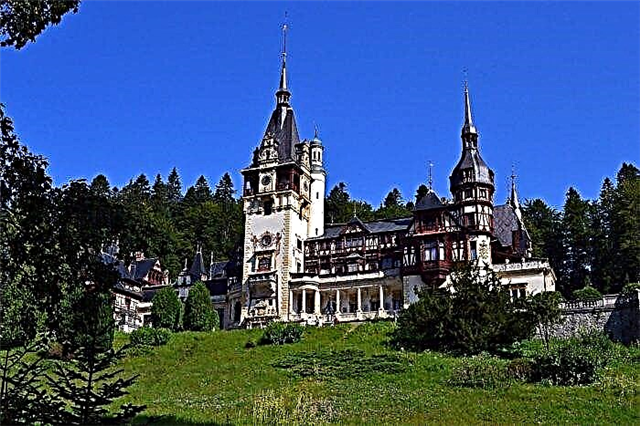
Corvin Castle
It is also the castle of ravens: its founder, King Corwin, had the nickname "The Raven". Fortress of the XIV century, located on a rocky cliff with a long bridge thrown over a deep gorge. Outwardly, it represents a classic knight's castle and its outlines may seem familiar: movies have been filmed here more than once. In addition to the classic expositions of weapons, armor and other medieval things for such a place, there is a huge torture chamber.

Rasnov fortress
A classic 14th century defensive fortress, founded by the Teutonic Order in order to save the peasants from enemy raids. The main attraction is a 62-meter-deep well dug by captive Turks to provide the citadel with water during a siege. There is also a museum dedicated to the Teutonic Order crusaders and the peasant life of medieval Romania.

Cantacuzino
This is a relatively new palace, rebuilt in 1903 by order of the then Prime Minister Cantucasino in the center of Bucharest. Now it is the National Museum named after George Enescu, the famous Romanian composer. The expositions are dedicated to the development of music, include collections of instruments and personal belongings of musicians, conductors, composers. It regularly hosts classical music evenings.

Pelisor
A unique summer palace-residence of Ferdinand I, representing an unusual mixture of styles: Art Nouveau with an admixture of Celtic and Byzantine symbols. The exposition is based on the personal belongings of Queen Mary and her collection of paintings. In 70 rooms, the original interiors of the bedrooms and study rooms of the Romanian kings and families who stayed here have been preserved.

Fortress Neamt
Located in the Carpathians near Transylvania. The citadel has a rich military history: it was stormed by the Turks and Poles, the walls of the bastions and now keep traces of those distant battles. The Stefan the Great Museum at the castle does not spoil visitors with an abundance of exhibits, but tourists are happy to wander around the perfectly preserved medieval buildings and admire the striking views of the valley from the fortress walls.

Throne Fortress
The place of the coronation of the rulers of Moldova, in the past - an important defense center of the surrounding lands. A classic military castle with powerful walls, drawbridge, high towers. It is accessible for inspection, however, as such there are no museum expositions here, but art exhibitions and medieval festivals are regularly held, including sports knightly tournaments and massive battles of foot men at arms.

Alba Iulia
Fort on the territory of the town of the same name in Transylvania. Inside there is a neighboring Orthodox monastery and a Catholic cathedral, the old Transylvanian Library and the Museum of Unification (in fact - local history), which painstakingly collected exhibits telling about Romanian history from ancient times. Visiting the attractions is free, with the exception of the museum.

Fagarash
The citadel of the XIV century, which for a long time had an important defensive significance, having lost it, turned into the residence of the wives of the Transylvanian rulers. There are no separate museum expositions, it is interesting in itself, as it has been perfectly preserved. This is a classic castle with a moat, a fortress wall and corresponding gloomy interiors within buildings: a dungeon, a torture chamber and long dark passages.

Virgo
An ancient Dacian fortress, which after the conquest by the Romans served the invaders, and then rebuilt into a medieval castle. Now little is left of the citadel, but the ruins are so picturesque that tourists literally cannot be crowded there. For a safe visit, the ruins were ennobled and strengthened, making convenient bridges for movement along the dilapidated fortress walls and the remains of internal buildings.

Poenar
This castle is unique: in addition to the fact that the prototype of Dracula, Lord Vlad, actually lived here, there is only one road to the fortress: a winding staircase with one and a half thousand steps leading to this mighty mountain citadel. The truth is now seriously dilapidated, but has not lost its attractiveness thanks to the many legends associated with it, for example, about a secret passage leading all the way to Turkey.

Julia Hashdeu Castle
According to legend, the project for the construction of the castle was passed on to the father through a medium by his deceased daughter. Soon after its construction, the building became the only museum of spiritualism in the world. There is a special "room of the dead" for seances, an exposition with supernatural artifacts, such as photographs of spirits and spiritistic notebooks. A special attraction is the statue of Christ, which miraculously survived after two destruction of the castle.

Sturdza Castle
A relatively fresh neo-Gothic palace, built on the site of the Sturdza family mansion in 1904. After World War II, the castle was used as a warehouse for explosives, then a children's psychiatric hospital and seriously dilapidated. Now the building has been transferred to the local diocese, through whose efforts the restoration has begun with the aim of later opening it to tourists. While you can only examine the castle from the outside, take a walk in the surrounding park.

Rupia fortress
Built by the Teutonic Crusaders in the 14th century. It is located on the top of a small mountain, where a serpentine road leads. The main part of the buildings is perfectly preserved and has been restored, some decided to leave in the form of picturesque ruins. In addition to the fortress itself, there is nothing special to see here, there is no museum in the castle. Lovers of ancient ruins come here to feel the spirit of the Middle Ages.

Boncida Banffy
Palace of the XVI century, nicknamed "Versailles of Transylvania".Previously had fortifications around, the chronicles tell of its siege by the Austrians. Today it is an elegant noble estate, although it has fallen into disrepair, the revival of which has recently begun with the financial support of Charles, Prince of Wales. Here you can admire the old interiors and the magnificent park.

Miko
A powerful citadel of the 17th century, which defended the border with Hungary, played a purely military role for almost its entire history. After losing its significance as a fortification, it was slightly rebuilt in the late Renaissance style. Since 1930 it has been a museum, after 1978 it was combined with a library. The expositions mainly reflect the military past of the fortress: weapons, armor, standards and the like.

Kemeny
It is a private property, but the Kemeni family opened their castle to tourists. The citadel was rebuilt several times, and as a result, a palace turned out from a military fort. Unfortunately, you will not see natural old interiors here, completely remake: during the war, absolutely everything was stolen by local residents. All that remains is to admire the magnificent architecture and stunning landscapes of the forests surrounding the castle.

Oradea fortress
A pentagonal star-shaped military fort in the middle of the Romanian city of the same name. Ruins remain of the ramparts, only the inner buildings of a later construction have survived. They are home to a museum with displays of various subjects: toys, medieval costume, photography, and more. Exhibitions are temporary, they are updated often, therefore, before visiting, you should know in advance what you can see there.

Citadel of Sighisoara
This fortress was lucky: since the 13th century it has remained practically unchanged and the spirit of antiquity has permeated literally every stone of it. The knightly citadel of the town of Sighisoara returns to the Middle Ages every July. A festival is held here with a grand fair, large-scale battles, craft master classes of potters, blacksmiths and weavers, concerts, and competitions.


